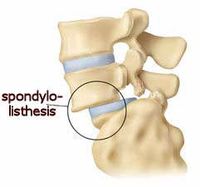What is sciatica?
 The sciatic nerve is the longest nerve in the body. It originates in the pelvic area and travels through the buttocks to the ends of both legs. Sciatica refers to the pain that is caused by the suppression and inflammation of the sciatic nerve.
The sciatic nerve is the longest nerve in the body. It originates in the pelvic area and travels through the buttocks to the ends of both legs. Sciatica refers to the pain that is caused by the suppression and inflammation of the sciatic nerve.
The pain usually starts in the lower back of the person and travels down the length of the legs. Mostly, it is experienced in one leg only. It is not a condition by itself, but rather a symptom of various internal spinal problems.
How to identify sciatica?
The following factors can help identify sciatica:
- Pain in the lower back leading to one or both legs
- Numbness or tingling in thighs or pelvic area
- Pain gets worse by moving or sudden movements
- Feeling of weakness in the calf, foot or toe muscles
Triggers of Sciatica
Common triggers of sciatica originate in the lower back causing discomfort in the least and partial immobility in the worst cases. Some of the reasons why sciatic back pain occurs includes the following:
- Lumbar herniated disc
 There is a disc for cushioning between every two successive vertebrae of the lumbar spine. The discs assist in the smooth movement of the spine and also function as shock absorbers in case of any sudden movement.
There is a disc for cushioning between every two successive vertebrae of the lumbar spine. The discs assist in the smooth movement of the spine and also function as shock absorbers in case of any sudden movement.
When the outer rings of the discs, between the vertebrae of the lumbar spine, gets damaged, the gel-like substance in them oozes out. This phenomenon is called lumbar herniated disc. It is also referred to as a bulging disc.
The disc usually slips from its original place and puts pressure on the areas around it, including the sciatic nerve. This causes sciatica. Also, the marrow in the discs contains hyaluronic acid. It is an irritant and causes inflammation when it comes in contact with nerves.
Lifting heavy weights, sudden movements or shocks to the body can result in slippery discs. Also, as the person ages, the discs lose their protective liquid thereby increasing the risk of dislocated discs. Obesity and weak muscles can also increase the chances of herniated discs due to the extra burden on the spine.
- Lumbar spinal stenosis
 Most of the nerves of the spinal cord pass through the spinal canal and the gaps between the vertebrae (neural-foramina). In lumbar spinal stenosis, the lower spinal canal and foramen narrow down for various reasons.
Most of the nerves of the spinal cord pass through the spinal canal and the gaps between the vertebrae (neural-foramina). In lumbar spinal stenosis, the lower spinal canal and foramen narrow down for various reasons.
As there is less area for the nerves to pass through the spinal canal, they become constricted. The excess pressure inflames the nerves. If the sciatic nerve of a person passes through such an area, they suffer from sciatica.
There are many factors that can cause lumbar spinal stenosis. Sometimes the facet joints of the vertebrae get swollen due to friction and restrict the blood flow through the nerves. In some cases there is overgrowth of the tissues. Damaged discs can also result in stenosis.
- Spondylolisthesis
 Spondylolisthesis is the phenomenon in which one vertebra of the spine slips over its successive vertebra. It mostly occurs in the lumbar spine. The displacement of the vertebra can compress the sciatic nerve and cause pain in the lower back and legs.
Spondylolisthesis is the phenomenon in which one vertebra of the spine slips over its successive vertebra. It mostly occurs in the lumbar spine. The displacement of the vertebra can compress the sciatic nerve and cause pain in the lower back and legs.
Certain defects in the bones of the lumbar spine during birth can prod the vertebrae to slide. Sudden movements or accidents can also cause this problem. Sometimes, constant strain on the spine, like heavy lifting, bad posture, etc. results in spondylolisthesis. Spondylolisthesis is very common in old people. The bones of older people lose their natural lubrication and strength and are more likely to slither.
- Piriformis syndrome
 Piriformis is the muscle found in the buttocks. This muscle connects the back of the body to our thighs. It helps in the movement of our buttocks and the easy rotation of our legs. The sciatic nerve resides under this muscle.
Piriformis is the muscle found in the buttocks. This muscle connects the back of the body to our thighs. It helps in the movement of our buttocks and the easy rotation of our legs. The sciatic nerve resides under this muscle.
Any injury or damage caused to this muscle can most likely affect the sciatic nerve too. Inflammation, protrusion, stiffening or bleeding of this muscle can aggravate the roots of the sciatic nerve and lead to sciatica.
It is also called “wallet sciatica” as it usually happens because of the improper way a person sits with their wallet in the back pocket of their jeans. The condition easily gets worse if you sit for very long periods.
- Pregnancy
Sometimes, pregnant women experience sciatic pain as well. It happens when the fetus puts pressure on the spine of the woman, especially while sitting or leg cramps. The stress caused sometimes pinches the sciatic nerve and results in lower back pain and numbing in the legs.
During pregnancy, women gain a lot of weight as well. Their spine not only holds their own weight but also supports the weight of the baby inside them. This excessive weight sometimes suppresses the nerve in the spine and causes sciatica.
- Sacroiliac joint dysfunction
Sacroiliac joint is the joint that connects the sacrum with the lowest part of the lumbar spine. Any inflammation or irritation in this joint can also irritate the nerves coming out of the lumbar. Mostly sacroiliac joint dysfunction only causes lower back pain. However, if the swelling or soreness of the joint is intense, it can irritate the sciatic nerve as well.
Mostly this dysfunction becomes more common with age as the joints become more brittle. If a person suffers from arthritis they are more likely to suffer from sciatica as well.
- Other causes
Certain occasional factors can cause sciatica to flare up as well. Any spinal injury can inflame the nerves and induce sciatica. Some infections that directly harm the spine can also trigger sciatica. Spine tumors, when formed in the lumbar, may also promote sciatica.
 Cauda equina syndrome is a very rare form of spine disease which harms the nerves of the spinal cord. This syndrome can cause sciatica as well.
Cauda equina syndrome is a very rare form of spine disease which harms the nerves of the spinal cord. This syndrome can cause sciatica as well.
Obesity can increase the chances of disc generation. A sedentary lifestyle also makes muscles weak. As a result, the bones and body become more vulnerable and easy targets of lower back pain.
Smoking, bad posture, uncomfortable shoes and unsupportive mattresses for sleep can also increase the chances of sciatic back pain.
Recommended Reading:
Why Bed Rest Is Not Recommended For Sciatica
Vitamin D and chronic back pain & sciatica – a case for supplementation?
Herbs that Combat Inflammation


i have a lumbar heriniated disc.it now starts to go down the leg.it is very painfull and it is worse when i am sleeping.i once bought a book from u but it never really helped me because it does not really tells me what medicine to use and where to get them.i am 57 years old.i have been having this for the past 20 years.it ius now starting to go down one leg.Scanners showed that my spine is S shaped.Can u please assist me.
LikeLike